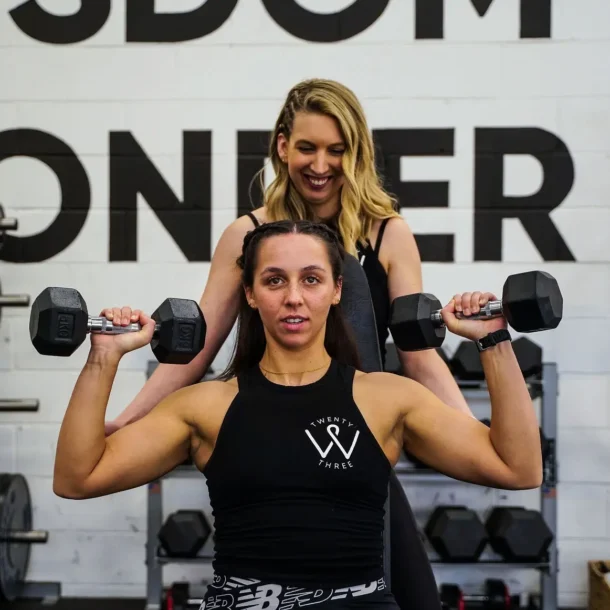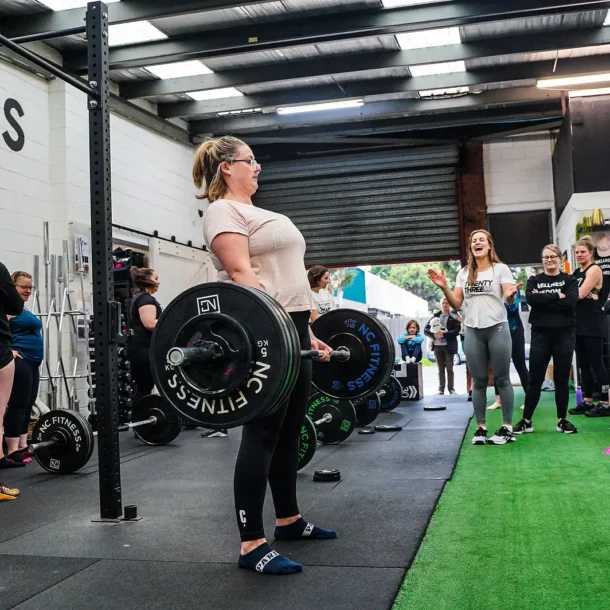
Resistance training elicits an array of hormonal response that are important to the increase in strength and power production of the muscles. Unfortunately, many women are trapped between their ideal of a forever strong, lean and athletic looking body and the reality of following a training and nutritional protocol required to get there.
With men having 20 times more testosterone than females, it becomes increasingly important to pay close attention to the hormonal response to exercise to maximise strength gains.
Exercise Selection
Proper resistance exercise prescription should include big, multi- joint exercises as the starting block to build strength as well as careful manipulation of the training variables (i.e. order of exercise, sets, reps, rest load, etc). Big movement such as the deadlift plays an important role in allowing the individual to activate and stimulate the greatest number of motor units, which will ultimately lead to the greatest anabolic effect (aka strength gains). Anabolism refers to the muscles ability to grow and remodel. With the most amount of muscle fibres stimulated per rep as well as the capacity to handle the greatest mechanical load, the deadlift is one move women should aim to master.
Understanding the role of testosterone
Testosterone has an important role in signalling protein re-synthesis while reducing the impact of catabolic hormones that cause the muscles to break down after training. Research suggests that selecting large muscle mass exercises with enough volume is more likely to trigger testosterone release and makes a great case as to why you should prioritise exercises like deadlifts at the start of your workout.
Having said this, with significantly lower testosterone levels than males, growth hormone (GH) is believed to be more responsible for causing hypertrophy, leanness and strength gains in females.
Understanding Growth Hormone (GH)
Females naturally have higher GH levels than males, with exercise stimulating an even greater difference in this hormone. Have you ever wondered how much work is enough to truly kick start these hormones to do their job? Research indicates that multiple set resistance exercise increases and prolongs the GH response in females compared to single sets and resistance training with higher volume and short recovery periods, elicits a greater GH response than low volume training with longer breaks.
The Lesser Known Hormone Cortisol
There is one more hormone ‘player’ we wish to discuss.
You have probably heard that cortisol is the stress hormone. Which is 100% true. But what you might be unaware of is that the primary function of cortisol are catabolic, meaning it also triggers the degradation of protein and decreases muscle re-synthesis at the same time. Immediately following training cortisol levels play an important role in muscle tissue remodelling but resting cortisol levels should return to normal shortly there after to allow muscle growth and repair to occur.
Further, sustained higher levels of cortisol has the ability to affect your metabolism and the bodies ability to regulate your blood sugar levels, ultimately making weight loss harder than it needs to be.
Why Women Should Learn How to Lift
A case can be made that the greatest cortisol reponse is triggered by more metabolically demanding training protocols, such as HIIT. This makes a great case to support why more women should be looking to hit the heavier weights as a solution.
Start By Mastering the Basics
Do you want to learn the fundamental of how to deadlift. Learn more below.
If videos are not your thing…
Consider joining our next 28 day challenge – 23w.com.au

Ange Drake is an personal trainer, women’s empowerment coach and fitness blogger in the northern suburbs of Melbourne. She is the director of one of the few womens’ only strength training gyms in Melbourne, 23W. Ange helps women to learn how to use strength based training, nutritional strategies and a positive mindset to transform their bodies, relationship with food and mind.
Can’t decide which of our packages is best suited for you? Take our questionnaire to help you decide!





